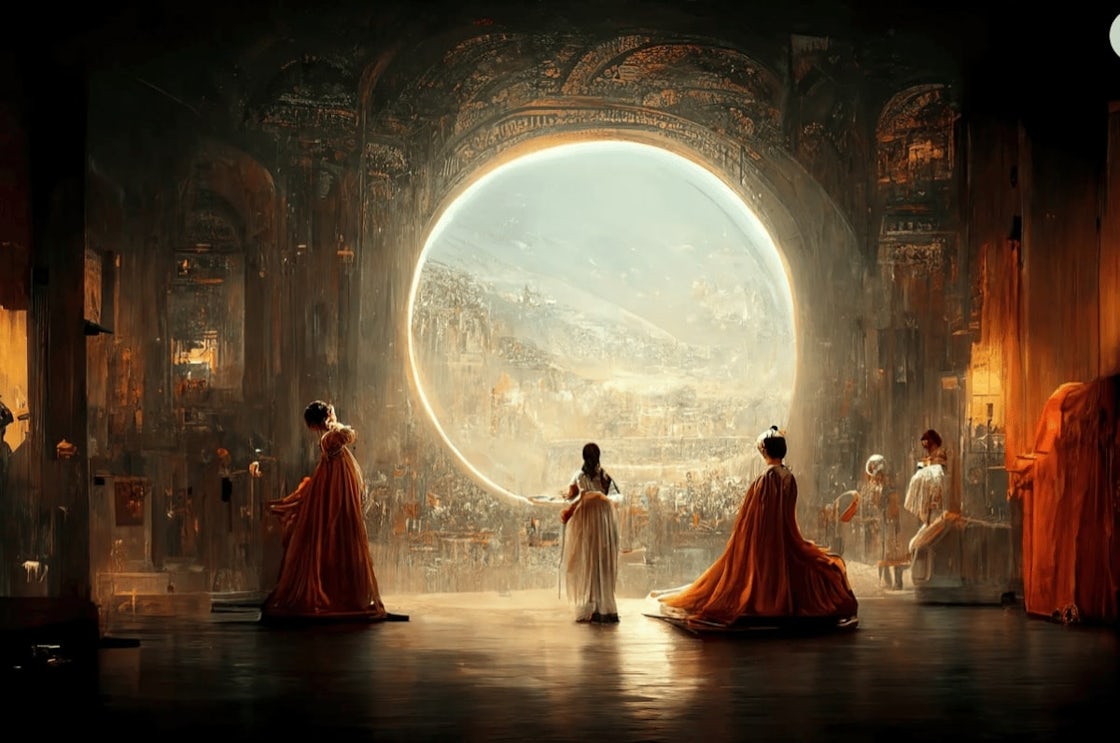What Are AI NFTs: The Beginner's Guide

- Published on

Intro
🔴 Artificial intelligence (AI) non-fungible tokens can be created by embedding a Generative Pre-trained Transformer 3 (GPT-3) into their smart contracts.
🔴 Unlike regular digital assets, AI NFTs can make new content and integrate dynamic experiences into their smart contracts thanks to their self-learning capabilities.
🔴 Besides helping redefine the way we think about digital assets, AI NFTs can help create a more meaningful way for us to interact with tokenized items.
What happens when you combine NFTs with another rapidly evolving technology like artificial intelligence (AI)? Read on to find out!

NFTs are digital items stored on a blockchain that hold unique metadata and identifiers that make them uniquely distinguishable from any other digital asset. They’re used to prove ownership and authenticity for both digital and real-world objects. NFTs have revolutionized one industry after another since their meteoric rise to popularity in 2020. Massive leaps forward in the artificial intelligence (AI) field are now opening doors for this technology to be extended to the Web3 realm. Meet one of the first fruits of this synergy: AI NFTs.
What is an AI NFT?
Artificial intelligence (AI) is broadly understood as the ability of a computer to simulate human intelligence and perform sophisticated tasks such as decision-making, problem-solving, and learning. This and other adjacent technologies have seen exponential growth in the past decade, becoming intertwined with many aspects of our daily lives. While AI-generated NFT art has emerged as one of the main categories of the NFT market, some project teams have taken this up a notch and started incorporating AI models within NFTs.
One design of an AI NFT is a tokenized asset with a Generative Pre-trained Transformer 3 (GPT-3) AI model coded into its smart contract. A GPT-3 is a language model based on deep learning and is used to produce human-like text. On top of being able to interact with people via user inputs, AI NFTs can come with other properties like animation. This makes them more dynamic compared to more “traditional” NFTs that often take the form of an image or audio file.

How Are AI NFTs Different From Regular NFTs?
As we briefly touched on above, NFTs are unique, indivisible, immutable, and digitally scarce. They can also act as proof of ownership of the underlying asset, so that its authenticity and provenance can be easily verified at any time.
However, today the bulk of popular NFTs are static images that can’t evolve or interact with the user. For instance, CryptoPunks is a widely popular NFT collection, but the ways in which you can interact with these digital collectibles are limited.
AI NFTs, on the other hand, can create new content on their own and produce dynamic experiences thanks to their learning abilities. The more these digital assets are exposed to a specific environment or user, the more data they can pull and generate.

Benefits of Merging AI and NFTs
1. Enhanced interactivity
AI NFTs can leverage deep learning methods such as computer vision, speech recognition, and natural language processing to make your tokenized asset more dynamic and interactive.
Content creators or project teams can program an AI NFT to respond to certain commands or generate new designs based on user input – allowing the tokenized asset’s output to continuously evolve. This unlocks a unique experience for users by providing them with more meaningful ways to interact with their NFT.
2. Redefining digital art
While the utility of NFTs can manifest in many industries, digital art is still one of the most popular use cases. NFT technology has disrupted the way we create and collect digital artwork, allowing us to own and trade it much like physical art.
In the generative art space, AI models study a large database of human-created artwork and learn how to produce original art. This is particularly useful for project teams or creators who want to issue large sets of NFT collections but would like to avoid the trouble of creating each piece by hand.
Taking the generative AI art to the next level, AI-infused NFTs are adaptable, intelligent, dynamic, and upgradeable. Imagine an NFT that can learn from conversing with you and react to your moods, creating increasingly more complex outputs.
3. Broader ecosystems
Combining AI with blockchain technology enables us to constantly upgrade underlying technological structures. In addition to giving users more ways to interact with their NFTs, AI technology can also provide a more intuitive and adaptive approach to running an NFT marketplace. The ability to automatically adjust prices, listings, spot marketplace trends, and tweak other parameters quickly can help elevate the NFT browsing experience.

Conclusion
Although AI NFTs are still relatively new, the marriage between AI and non-fungible assets has the potential to unlock new experiences for both creators and collectors. We’re just starting to see some of the ways that AI and NFTs can be combined to work synergistically. The current growth of AI NFTs in the Web3 world suggests that it will continue to present more exciting opportunities in domains beyond the art space.
#Quiz Time! Which one is inconvenient❓
- AI NFTs are just for art
- AI NFTs aren't static, but interactive, and intelligent
- AI NFTs are relatively new
Did you enjoy reading?
References
Follow Me !
If you enjoyed this article, follow me on social media for more thoughts on full-stack development particularly in the web3 space!